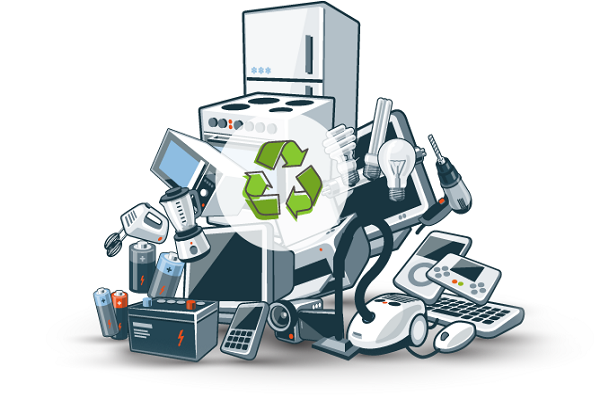Any discarded gadget or device with a plug or a battery is known as e-waste (electronic recycling). Electronic waste, end-of-life electronics, e-scrap — all are the names of the same thing. However, when specifically related to IT, it can also be termed IT waste.
This type of trash has become the world’s fastest and most dangerous type of waste stream. The ongoing developments in information technology keep on introducing something new. Thus, to stay up-to-date, people intend to upgrade their existing technology — a phone, tab, or computer sooner than later.
The question to ponder upon is, where do all of the old electronic items go? If not disposed of properly, redundant electronics go straight to the environment like any other common trash. However, the danger that e-waste cause to the environment is far more than the general waste.
Given are some facts about e-waste environmental impact.
Dangers of E-waste to the Environment
It Contaminates Atmosphere
Some materials used in the composition of electronic devices — such as Lead, Mercury, Lithium, and Nickel are highly hazardous. When e-waste is disposed of carelessly, it contaminates air, water, and soil — ultimately causing severe health issues for all living beings.
Electronic waste is not biodegradable, and that is why this is considered the most dangerous waste of all.
Besides, the methods used to recover valuable materials from the e-waste — such as open-air burning and acid baths also release toxic fumes and materials into the environment and pollute the overall atmosphere. The poisonous materials either come in direct contact with the living things or get inside the body through air and food. Dumping of electronic scrap also forms landfills which not only cover space but also spread pollution into the surrounding areas.
How Does Recycling Help the Environment?
Preserve Natural Resources, Energy, and Cost
Electronic materials contain a specific ratio of minerals and metallic elements that are mined while consuming a lot of energy, effort, and money. Therefore, natural resources are decreasing as fast as the production of electronic devices is increasing.
Therefore, instead of making discarded electronics the environment waste, choose recycling. A report reveals that 98% of constituents of an electronic device are recyclable. Some components — such as wires that contain aluminum and copper, can be reused multiple times. Additionally, mining and refining the metals also costs much. Thus, reusing them into other materials not only will preserve natural resources but the environment.
Prevent Landfill Formation
Recycling environment e- waste has dua benefits — saving space that landfills cover and protecting the environment against unhealthy elements.
The electronic waste disposed of into the environment results in the formation of landfills. Landfills cover a lot of space, and that too for a useless purpose. The constituents of e-waste like gold, and aluminum, when exposed to the open air, start eroding and release toxins into the soil.
These pollutants kill other living organisms such as plants and microbes — ultimately disturbing the entire ecosystem. As the micro-organisms die, the decomposition of soil and other litter stops. Hence the environment becomes more and more polluted.
The effects of e-waste on the environment become more prevalent when the toxins from the soil seep into the water and air, ultimately making the atmosphere highly vulnerable for humans and other living beings.
Electronic Recycling Controls Air Pollution
Electronic recycling helps reduce air pollution in different ways. When air passes through the e-waste landfills, it gets contaminated, and thus it makes everything polluted that comes in contact. As recycling scales down landfill formation, so does decrease the environmental pollution.
On the hand, mining metals and other components for making electronics and other similar items also result in air contamination. For instance – to extract a metal from the rock, it is blasted, as a result of which the particles of dust and rock spread into the air and make it unhealthy.
However, metals extracted from electronic waste don’t require to be processed in detail to make them reusable.
Final Words!
Along with promoting recycling, we also need to encourage the use of recyclable materials for the composition of electronic devices. This way, not only can we save on energy and natural resources but reduce the impact of e-waste on the environment.



